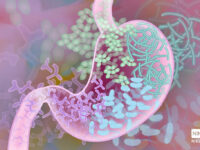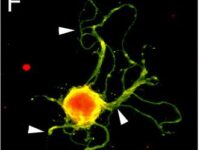Love holds many definitions. In the Google Dictionary, it’s described as “an intense feeling of deep affection,” and similar, often more complex definitions can be found in philosophy, poetry, art, literature, and film. It means different things to different people and refers to not only romantic attachments but also familial, platonic, or sexual connections. While we may typically associate these warm feelings with our heart, it’s commonly understood that the scientific basis of love is actually just hormones and chemicals passing through our brains. Not as romantic, huh?
While we may typically associate these warm feelings with our heart, it’s commonly understood that the scientific basis of love is actually just hormones and chemicals passing through our brains.
On the molecular level, the different kinds of love can be distinguished depending on the chemicals released. These variations are thanks to the hypothalamus, the region of the brain that is largely involved in controlling hormone release from the pituitary gland. With lust and sexual attraction, the sex hormones testosterone and estrogen come into play, increasing libido in both men and women. With romantic attraction, or when a person first starts dating or “falling in love” with someone, phenylethylamine, norepinephrine, and dopamine play important roles. Phenylethylamine (PEA) can be found in chocolate, a debated aphrodisiac, and acts as a stimulant, which leads to the release of norepinephrine and dopamine. It has been observed that people who report to be “in love” have higher levels of PEA in their brains than those who do not. Norepinephrine, more commonly associated with the fight-or-flight response, leads to increased heart rate and sweaty palms, as well as the giddy, energetic feeling that can explain why one may not be able to eat or sleep normally when they are in love. Furthermore, dopamine, also known as the “reward hormone,” is released when the body feels pleasure, creating the euphoric “head-over-heels” feeling.
On the molecular level, the different kinds of love can be distinguished depending on the chemicals released.
With deep romantic attachment, such as commitment and long-term relationships, oxytocin and serotonin are also heavily involved. Oxytocin, or the “love hormone,” is stimulated by physical touch and has been observed to strengthen social trust in mammals. It is typically secreted during moments of intimacy, such as breastfeeding, childbirth, hugging, holding hands, and sex. Serotonin, or the “happiness chemical,” is involved in regulating appetite and mood, but it also participates in the brain’s reward system. Adversely, serotonin is often associated with addiction, and abnormal levels of this hormone can lead to over-dependence or even obsession in relationships.
In neuroscience, love and lust can activate similar areas of the brain. A 2012 fMRI study led by neuroscientist and professor Dr. Stephanie Cacciopo demonstrated that both love and lust lead to increased activity in the “subcortical brain areas associated with euphoria, reward, and motivation, as well as in the cortical brain areas that are involved in self-representation and social cognition.” With lust however, activity is reduced in the ventral striatum, amygdala, hypothalamus, inferior parietal lobule, and somatosensory cortex. This suggests that sexual desire is driven by a specific physical goal, whereas love is driven by more abstract and behaviorally complex goals. Meanwhile, love is associated with greater activity in dopamine-rich areas of the brain involved in reward, motivation, and habit formation, which makes sense considering love is often seen as a rewarding, positive, and motivating experience.
In other words, love is ultimately a choice. It may have multiple definitions — philosophically, poetically, scientifically — but everyone has the ability to find their own meaning of love.
Considering the scientific evidence, love does indeed seem to have a “formula,” even if the poets disagree. But, while these chemicals can be synthesized in a lab, love cannot simply be reduced to an emotional drug addiction. Equally as important in falling in love is simply the intention to be with a significant other. In other words, love is ultimately a choice. It may have multiple definitions — philosophically, poetically, scientifically — but everyone has the ability to find their own meaning of love.
Image Source: Pixabay
Source: 1



